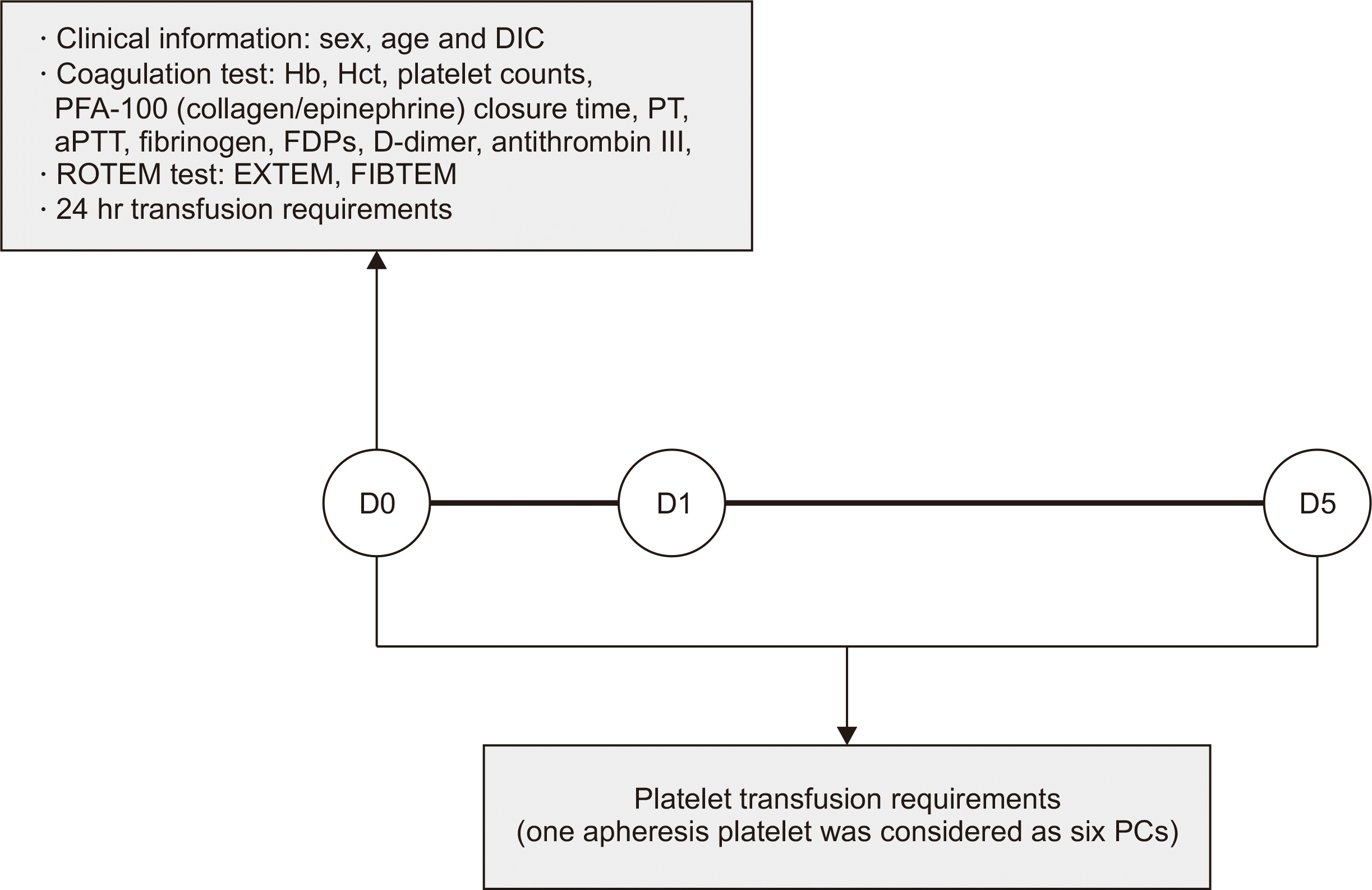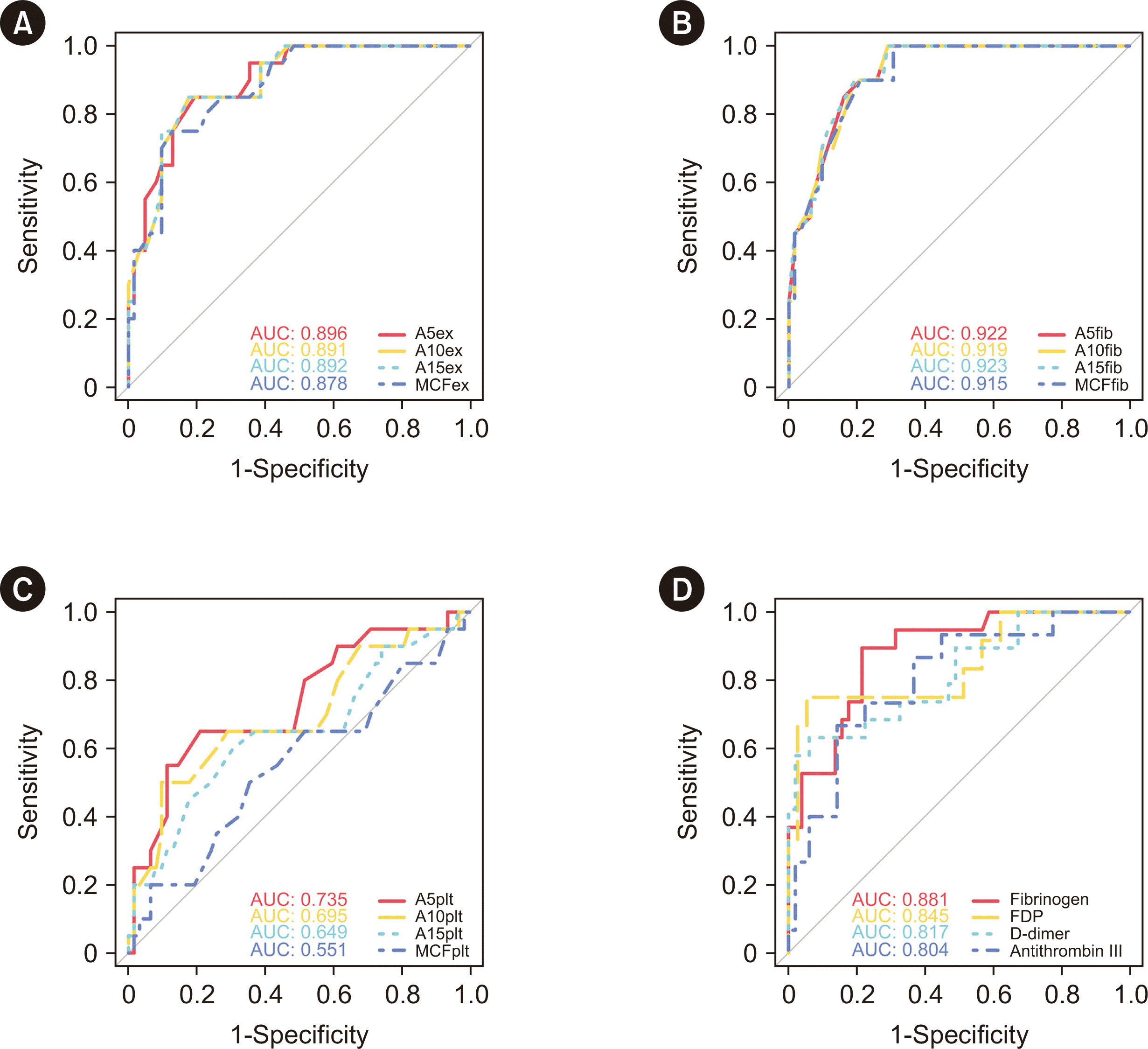1. Spahn DR, Bouillon B, Cerny V, Duranteau J, Filipescu D, Hunt BJ, et al. 2019; The European guideline on management of major bleeding and coagulopathy following trauma: Fifth edition. Crit Care. 23:98. DOI:
10.1186/s13054-019-2347-3. PMID:
30917843. PMCID:
PMC6436241.

3. Shander A, Goobie SM, Warner MA, Aapro M, Bisbe E, Perez-Calatayud AA, et al. 2020; Essential role of patient blood management in a pandemic: a call for action. Anesth Analg. 131:74–85. DOI:
10.1213/ANE.0000000000004844. PMID:
32243296. PMCID:
PMC7173035.

4. Bae HJ, Ahn BS, Youn MA, Park DY. 2021; Survey on blood donation recognition and Korean Red Cross' response during COVID-19 pandemic. Korean J Blood Transfus. 32:191–200. DOI:
10.17945/kjbt.2021.32.3.191.
5. Greinacher A, Fendrich K, Hoffmann W. 2010; Demographic changes: the impact for safe blood supply. Transfus Med Hemother. 37:141–8. DOI:
10.1159/000313949. PMID:
20737017. PMCID:
PMC2914426.

6. Gammon RR, Rosenbaum L, Cooke R, Friedman M, Rockwood L, Nichols T, et al. 2021; Maintaining adequate donations and a sustainable blood supply: lessons learned. Transfusion. 61:294–302. DOI:
10.1111/trf.16145. PMID:
33206404. PMCID:
PMC7753343.

7. Stanworth SJ, New HV, Apelseth TO, Brunskill S, Cardigan R, Doree C, et al. 2020; Effects of the COVID-19 pandemic on supply and use of blood for transfusion. Lancet Haematol. 7:e756–64. DOI:
10.1016/S2352-3026(20)30186-1. PMID:
32628911.

8. Kaufman RM, Djulbegovic B, Gernsheimer T, Kleinman S, Tinmouth AT, Capocelli KE, et al. 2015; Platelet transfusion: a clinical practice guideline from the AABB. Ann Intern Med. 162:205–13. DOI:
10.7326/M14-1589. PMID:
25383671.

9. Estcourt LJ, Birchall J, Allard S, Bassey SJ, Hersey P, Kerr JP, et al. 2017; Guidelines for the use of platelet transfusions. Br J Haematol. 176:365–94. DOI:
10.1111/bjh.14423. PMID:
28009056.

10. Joseph B, Pandit V, Meyer D, Butvidas L, Kulvatunyou N, Khalil M, et al. 2014; The significance of platelet count in traumatic brain injury patients on antiplatelet therapy. J Trauma Acute Care Surg. 77:417–21. DOI:
10.1097/TA.0000000000000372. PMID:
25159244.

11. Hess JR, Lindell AL, Stansbury LG, Dutton RP, Scalea TM. 2009; The prevalence of abnormal results of conventional coagulation tests on admission to a trauma center. Transfusion. 49:34–9. DOI:
10.1111/j.1537-2995.2008.01944.x. PMID:
18954393.

12. Stansbury LG, Hess AS, Thompson K, Kramer B, Scalea TM, Hess JR. 2013; The clinical significance of platelet counts in the first 24 hours after severe injury. Transfusion. 53:783–9. DOI:
10.1111/j.1537-2995.2012.03828.x. PMID:
22882316.

13. Wohlauer MV, Moore EE, Thomas S, Sauaia A, Evans E, Harr J, et al. 2012; Early platelet dysfunction: an unrecognized role in the acute coagulopathy of trauma. J Am Coll Surg. 214:739–46. DOI:
10.1016/j.jamcollsurg.2012.01.050. PMID:
22520693. PMCID:
PMC3348700.

16. Valles J, Santos MT, Aznar J, Marcus AJ, Martinez-Sales V, Portoles M, et al. 1991; Erythrocytes metabolically enhance collagen-induced platelet responsiveness via increased thromboxane production, adenosine diphosphate release, and recruitment. Blood. 78:154–62. DOI:
10.1182/blood.V78.1.154.154. PMID:
1712639.
18. Görlinger K, Dirkmann D, et al. Gonzalez E, Moore HB, editors. 2016. Rotational thromboelastometry (ROTEM
®). Trauma induced coagulopathy. Springer International Publishing;Cham: p. 267–98. DOI:
10.1007/978-3-319-28308-1_18.
19. Shin KH, Kim IS, Lee HJ, Kim HH, Chang CL, Hong YM, et al. 2017; Thromboelastographic evaluation of coagulation in patients with liver disease. Ann Lab Med. 37:204–12. DOI:
10.3343/alm.2017.37.3.204. PMID:
28224766. PMCID:
PMC5339092.

20. Kim SY, Gu JY, Yoo HJ, Kim JE, Jang S, Choe S, et al. 2017; Benefits of thromboelastography and thrombin generation assay for bleeding prediction in patients with thrombocytopenia or hematologic malignancies. Ann Lab Med. 37:484–93. DOI:
10.3343/alm.2017.37.6.484. PMID:
28840985. PMCID:
PMC5587820.

21. Veigas PV, Callum J, Rizoli S, Nascimento B, da Luz LT. 2016; A systematic review on the rotational thrombelastometry (ROTEM®) values for the diagnosis of coagulopathy, prediction and guidance of blood transfusion and prediction of mortality in trauma patients. Scand J Trauma Resusc Emerg Med. 24:114. DOI:
10.1186/s13049-016-0308-2. PMID:
27716278. PMCID:
PMC5048662.

22. Görlinger K, Saner FH. 2015; Prophylactic plasma and platelet transfusion in the critically Ill patient: just useless and expensive or even harmful? BMC Anesthesiol. 15:86. DOI:
10.1186/s12871-015-0074-0. PMID:
26054337. PMCID:
PMC4556318.

23. Klages M, Zacharowski K, Weber CF. 2016; Coagulation management in trauma-associated coagulopathy: allogenic blood products versus coagulation factor concentrates in trauma care. Curr Opin Anaesthesiol. 29:245–9. DOI:
10.1097/ACO.0000000000000304. PMID:
26784352.
24. Taylor FB Jr, Toh CH, Hoots WK, Wada H, Levi M. Scientific Subcommittee on Disseminated Intravascular Coagulation (DIC) of the International Society on Thrombosis and Haemostasis (ISTH). 2001; Towards definition, clinical and laboratory criteria, and a scoring system for disseminated intravascular coagulation. Thromb Haemost. 86:1327–30. DOI:
10.1055/s-0037-1616068. PMID:
11816725.

25. Levi M, Toh CH, Thachil J, Watson HG. 2009; Guidelines for the diagnosis and management of disseminated intravascular coagulation. British Committee for Standards in Haematology. Br J Haematol. 145:24–33. DOI:
10.1111/j.1365-2141.2009.07600.x. PMID:
19222477.

26. Zeidler K, Arn K, Senn O, Schanz U, Stussi G. 2011; Optimal preprocedural platelet transfusion threshold for central venous catheter insertions in patients with thrombocytopenia. Transfusion. 51:2269–76. DOI:
10.1111/j.1537-2995.2011.03147.x. PMID:
21517892.

27. Olde Engberink RH, Kuiper GJ, Wetzels RJ, Nelemans PJ, Lance MD, Beckers EA, et al. 2014; Rapid and correct prediction of thrombocytopenia and hypofibrinogenemia with rotational thromboelastometry in cardiac surgery. J Cardiothorac Vasc Anesth. 28:210–6. DOI:
10.1053/j.jvca.2013.12.004. PMID:
24630470.

28. DeLong ER, DeLong DM, Clarke-Pearson DL. 1988; Comparing the areas under two or more correlated receiver operating characteristic curves: a nonparametric approach. Biometrics. 44:837–45. DOI:
10.2307/2531595. PMID:
3203132.

29. Ratner B. 2009; The correlation coefficient: Its values range between +1/−1, or do they? J Target Meas Anal Mark. 17:139–42. DOI:
10.1057/jt.2009.5.

32. Song JG, Jeong SM, Jun IG, Lee HM, Hwang GS. 2014; Five-minute parameter of thromboelastometry is sufficient to detect thrombocytopenia and hypofibrinogenaemia in patients undergoing liver transplantation. Br J Anaesth. 112:290–7. DOI:
10.1093/bja/aet325. PMID:
24065728.

33. Plotkin AJ, Wade CE, Jenkins DH, Smith KA, Noe JC, Park MS, et al. 2008; A reduction in clot formation rate and strength assessed by thrombelastography is indicative of transfusion requirements in patients with penetrating injuries. J Trauma. 64:S64–8. DOI:
10.1097/TA.0b013e318160772d. PMID:
18376174.

34. Meyer AS, Meyer MA, Sørensen AM, Rasmussen LS, Hansen MB, Holcomb JB, et al. 2014; Thrombelastography and rotational thromboelastometry early amplitudes in 182 trauma patients with clinical suspicion of severe injury. J Trauma Acute Care Surg. 76:682–90. DOI:
10.1097/TA.0000000000000134. PMID:
24553534.

35. Bombeli T, Spahn DR. 2004; Updates in perioperative coagulation: physiology and management of thromboembolism and haemorrhage. Br J Anaesth. 93:275–87. DOI:
10.1093/bja/aeh174. PMID:
15220183.

37. Schöchl H, Nienaber U, Maegele M, Hochleitner G, Primavesi F, Steitz B, et al. 2011; Transfusion in trauma: thromboelastometry-guided coagulation factor concentrate-based therapy versus standard fresh frozen plasma-based therapy. Crit Care. 15:R83. DOI:
10.1186/cc10078. PMID:
21375741. PMCID:
PMC3219338.

38. Velik-Salchner C, Haas T, Innerhofer P, Streif W, Nussbaumer W, Klingler A, et al. 2007; The effect of fibrinogen concentrate on thrombocytopenia. J Thromb Haemost. 5:1019–25. DOI:
10.1111/j.1538-7836.2007.02481.x. PMID:
17461931.

39. Schöchl H, Maegele M, Solomon C, Görlinger K, Voelckel W. 2012; Early and individualized goal-directed therapy for trauma-induced coagulopathy. Scand J Trauma Resusc Emerg Med. 20:15. DOI:
10.1186/1757-7241-20-15. PMID:
22364525. PMCID:
PMC3306198.

40. Görlinger K, Pérez-Ferrer A, Dirkmann D, Saner F, Maegele M, Calatayud ÁAP, et al. 2019; The role of evidence-based algorithms for rotational thromboelastometry-guided bleeding management. Korean J Anesthesiol. 72:297–322. DOI:
10.4097/kja.19169. PMID:
31096732. PMCID:
PMC6676023.

41. Ji SM, Kim SH, Nam JS, Yun HJ, Choi JH, Lee EH, et al. 2015; Predictive value of rotational thromboelastometry during cardiopulmonary bypass for thrombocytopenia and hypofibrinogenemia after weaning of cardiopulmonary bypass. Korean J Anesthesiol. 68:241–8. DOI:
10.4097/kjae.2015.68.3.241. PMID:
26045926. PMCID:
PMC4452667.







 PDF
PDF Citation
Citation Print
Print



 XML Download
XML Download